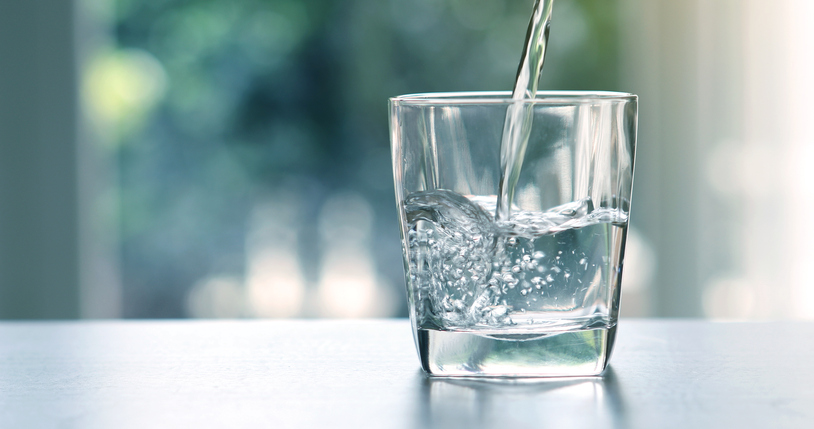Click here to Subscribe to Chips Tips Blog
Is Your Drinking Water Really Safe to Drink? How to Be Sure

It’s fun to watch movies about backcountry hiking or read books about how to survive if you get lost in the woods.
These types of activities can spark your imagination as well as lively conversation.
But in many parts of the world today, finding sources of safe drinking water, food, and shelter is not a mental exercise but a daily necessity.
And even here in Canada, large-scale waterborne disease outbreaks have made news headlines as recently as 2010, with a death toll of seven right here in Ontario.
As modernized as our water treatment protocols have become, they are by no means failsafe or foolproof. As of 2015, a National Institutes of Health (NIH) article reported that half of all waterborne disease outbreaks occur in smaller drinking water systems.
Here, the primary causes have been either a failure of an individual water system or a failure of a local water treatment facility. Nearly 300 unique outbreaks were studied, each of which affected the drinking water in certain regions of Canada or the United States.
With statistics like these, how can you know for sure that your drinking water is really safe? We have the answer—and it isn't trusting the local water treatment centers!
Bacteria, Parasites, Fungi: Drinking Water's Hidden Dangers
What types of contaminants can lead to unsafe drinking water conditions? And what types of water systems are most vulnerable to contamination?
The NIH study showed that reservoirs, wells, water bodies, cisterns, and even underground springs are all vulnerable to contamination by a wide range of pathogens.
Bacteria, parasites, fungi, chemicals, viral matter, and other pathogens can enter these and other types of water supply systems in any number of ways.
Documented entry points include storms that lead to flooding, waterline breaches, sewer line backflow, inadequate filtration, and poor system maintenance. These and other similar factors have all been implicated in permitting pathogens to enter the water supply and contaminate drinking water here in Canada.
As well, as Canada's weather patterns are becoming more intense and unpredictable, floods, fires, and other extreme weather events are becoming more commonplace and placing more strain on city and rural water treatment systems from every direction.
Actions by homeowners and renters can have their own measurable impact. For example, as many as one-quarter of Canadians may be a carrier for Toxoplasma gondii (T. gondii), a potent micro-parasite present in feline waste.
Simple improper disposal of used kitty litter can cause local water supplies to be infiltrated with this incredibly resilient micro-organism, which can cause irreversible fetal birth defects as well as toxoplasmosis in adults and children.
The Government of Canada points out that use of certain household chemicals such as cleaners, paints and solvents, bleach, adhesives and glues, pesticides, and oil products can leach into the water supply through storm drains and rain runoff.
Improper disposal of household items—everything from dental floss to diapers—can also cause major backups at local water and sewage treatment facilities, making the job of keeping drinking water supplies safe just that much more difficult.
What Works to Keep Your Personal Drinking Water Safe
As development continues and the human population increases, this places ever-increasing strain on all community systems. The local water treatment facilities are no exception. This means that we are all relying on each other to do our utmost to keep our shared water supplies clean and pure.
Luckily, you don’t have to rely on the “honor system” to make sure your own personal supply of drinking water is safe to consume!
As it turns out, the very best water purification technology isn’t human-made at all. It comes from our the sun. The sun emits ultraviolet light in three bands—A, B, and C. Bands A and B are already hard at work attempting to keep our planet from being overrun with toxins.
Band C is the most powerful natural purifier and cleaner of all, but the ozone layer that surrounds our planet keeps it from getting through into our atmosphere. Here is where nature and human ingenuity come together to do what neither can do on their own—keep your drinking water pure and safe!
Today’s ultraviolet water purification systems use human-generated UV-C spectrum light to neutralize 99.9 percent of waterborne toxins on contact. Unlike with chlorine and similar water additives, UV-C light doesn’t change the appearance or the taste of your water. It also doesn’t change the natural composition of your water in any way, other than to neutralize toxins that could impact your health.
When you add an ultraviolet light water purification system to your home’s water supply, you get lovely pure, clean, fresh water that tastes great and truly is safe to drink.
Ultraviolet Water Purification Maintenance
The use of UV light to purify water and air is not a new invention. It has been happening since the beginning of time naturally, and for many decades in commercial and residential applications.
Best of all, this type of system is incredibly economical to maintain. Aside from changing the UV bulb every 12 to 24 months, the system is self-maintaining. And you won't see a spike in your energy bill, either. A whole-home UV water purification system runs on the same amount of energy it takes to power a single 60-watt lightbulb.
Get in Touch
Here at Gravenhurst Plumbing, Heating & Electric, we have more than 70 years of industry expertise to serve all of your HVAC and plumbing needs. We are not just a local business. We are residents, too, and proud to call the Muskoka area home!
And remember, we are always on call for you with our 24/7 emergency repair service that includes holidays, weekends, and evenings. Contact us online, or give us a call at 877-885-3403 to request a free quote for an ultraviolet water purification system, learn about our line of standby generators, schedule HVAC maintenance, and more!

